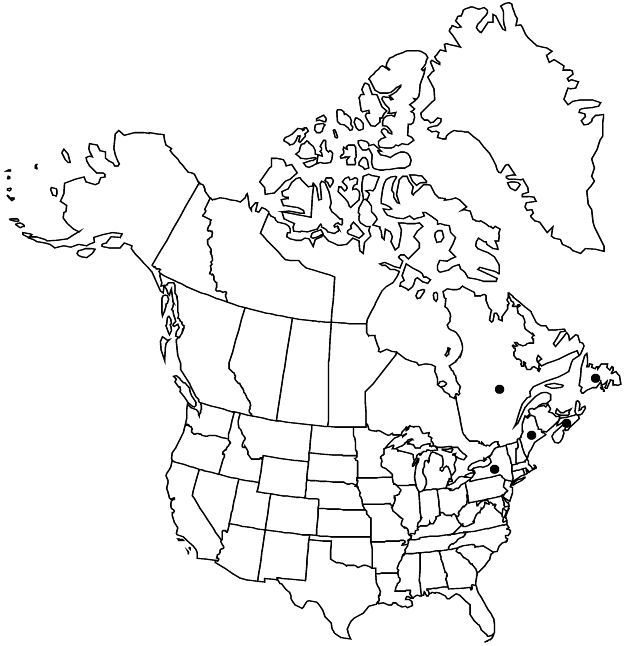Alchemilla micans
Bull. Herb. Boissier 1(app. 2): 28. 1893.
Plants medium-sized, dark green, often somewhat sericeous (abaxial surface of leaves), sometimes reddish-brown, especially on exposed distal part of stems and inflorescences, to 50 cm. Stems usually densely spreading to slightly ascending-hairy, usually glabrous in distal 1/2. Leaves: stipules translucent, strongly wine red-tinged proximally, lobes pale green, sometimes suffused wine red; petiole densely spreading or slightly ascending-hairy (especially in distal 1/3); blade usually reniform to orbiculate, 7–9-lobed, margins flat, sometimes slightly undulate, basal sinuses relatively wide or narrow, basal lobes not overlapping, middle lobes rounded, as long as to longer than their half-widths, to as long as wide and with straight sides; incisions usually absent or relatively short; teeth usually slightly connivent, almost symmetric to ± asymmetric, apex acute, abaxial surface with nerves hairy throughout, internerve regions uniformly or irregularly hairy, adaxial densely appressed-hairy throughout. Inflorescences: primary branches often sparsely, sometimes densely, ascending-hairy; peduncles glabrous or hairy. Pedicels glabrous or some of the proximal hairy. Flowers dark green, often becoming reddish; epicalyx bractlet lengths 0.5+ times sepals (narrower); hypanthium attenuate at base, usually glabrous, rarely sparsely hairy (in proximal flowers). Achenes not exserted.
Phenology: Flowering late May–Sep.
Habitat: Meadows, moist sand
Elevation: 0–400 m
Distribution

Introduced; Nfld. and Labr. (Nfld.), N.S., Que., Maine, N.Y., Europe
Discussion
Alchemilla micans has been widely known as A. gracilis Opiz; the type of that name is referable to A. monticola, a species that the original description also fits better.
Selected References
None.
Lower Taxa
"+timessepals" is not declared as a valid unit of measurement for this property."dm" is not declared as a valid unit of measurement for this property.